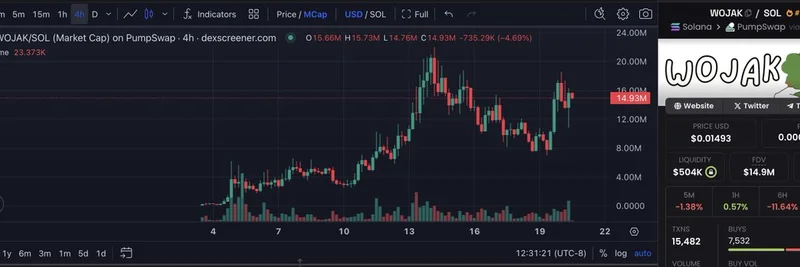In the wild world of crypto, where volatility is the name of the game, October 10, 2025, marked one of the most intense stress tests the market has ever seen. With a staggering $19.5 billion in liquidations and a $1 trillion drop in overall market cap, exchanges froze, layer-2 networks got clogged, and transaction fees skyrocketed. But amid the chaos, Fireblocks and Solana stood out, performing without a hitch. This thread from FireblocksHQ on X breaks it down, and it's particularly relevant for meme token enthusiasts on Solana.
The Market Meltdown: What Happened?
Picture this: the crypto market takes a nosedive, liquidations hit record highs, and infrastructure across the board struggles to keep up. Liquidations, for those new to the term, are when leveraged positions get automatically closed out due to price swings, often triggering a cascade of selling. On that day, Solana saw inbound transactions per second (TPS) spike to 100,000—six times its usual peak—while maintaining block times of just 400 milliseconds. That's like handling a Black Friday rush without any lines forming.
Fireblocks, a leading digital asset infrastructure provider trusted by over 2,400 institutions, shared how their system managed a 200% surge in Solana traffic. No customer disruptions, 100% success on first-try transactions, and fees staying under a penny—even during the peak 20 minutes of congestion when others were paying $3 or more per transaction.
Fireblocks' Secret Sauce: Tech That Doesn't Flinch
So, how did they pull it off? Fireblocks credits a combo of smart engineering tweaks, many refined after earlier events like the Trump meme coin frenzy earlier in the year. Key features include:
- Multi-node architecture: Spreading the load across multiple providers to avoid single points of failure.
- Active-active routing: Real-time monitoring and switching to the best-performing nodes.
- Stake-weighted Quality of Service (QoS): Prioritizing transactions intelligently based on network stakes.
- Dynamic fee optimization: Adjusting fees on the fly to keep costs low without sacrificing speed.
- Real-time error handling: Spotting and fixing issues instantly, ensuring no retries needed.
Broadcasting speeds held steady at 23 milliseconds, and block processing notifications came in under 2 seconds. Compared to a March 2025 stress test, that's a big improvement—halving broadcast times and shaving seconds off notifications.
For more in-depth details, check out Fireblocks' full blog post on the event.
Why This Matters for Meme Tokens on Solana
Solana has become the go-to blockchain for meme tokens, hosting hits like BONK, dogwifhat, and countless others that thrive on fast, cheap trades. Meme trading is all about timing—snagging that viral token before it moons or exiting before a rug pull. During market panics, unreliable networks can mean missed opportunities or stuck funds.
Fireblocks' performance shows that enterprise-grade tools can keep things smooth even when the market's in freefall. Low fees (think $0.007 median during chaos) are a game-changer for small-stakes meme plays, where every cent counts. Plus, with Solana's high TPS handling the load, meme ecosystems can continue pumping out trades without the gridlock seen on other chains like Arbitrum, where fees reportedly hit over $500.
This reliability isn't just for big institutions; it trickles down to retail traders and DeFi users, making Solana a more attractive hub for the next wave of meme crazes.
Looking Ahead: Building Resilient Crypto Ecosystems
Events like October 10 remind us that in crypto, resilience is key. Fireblocks and Solana's flawless run sets a high bar, proving that with the right infrastructure, blockchain can handle real-world scale. For meme token creators and traders, this means fewer headaches and more focus on the fun stuff—like spotting the next big viral hit.
If you're diving into Solana memes, keeping an eye on infrastructure updates like these can give you an edge. Stay tuned to Meme Insider for more on how tech advancements are shaping the meme token landscape.


